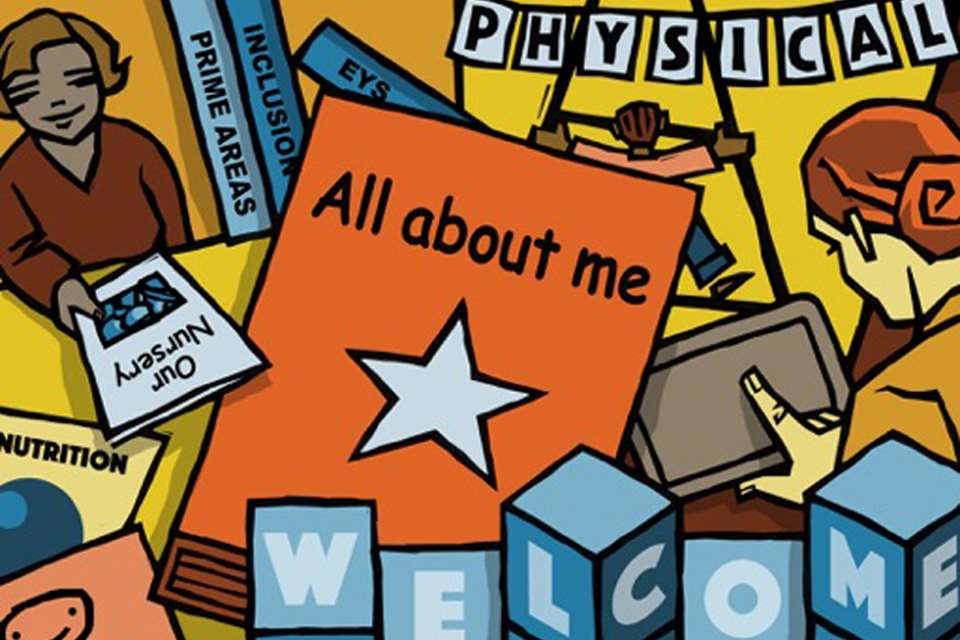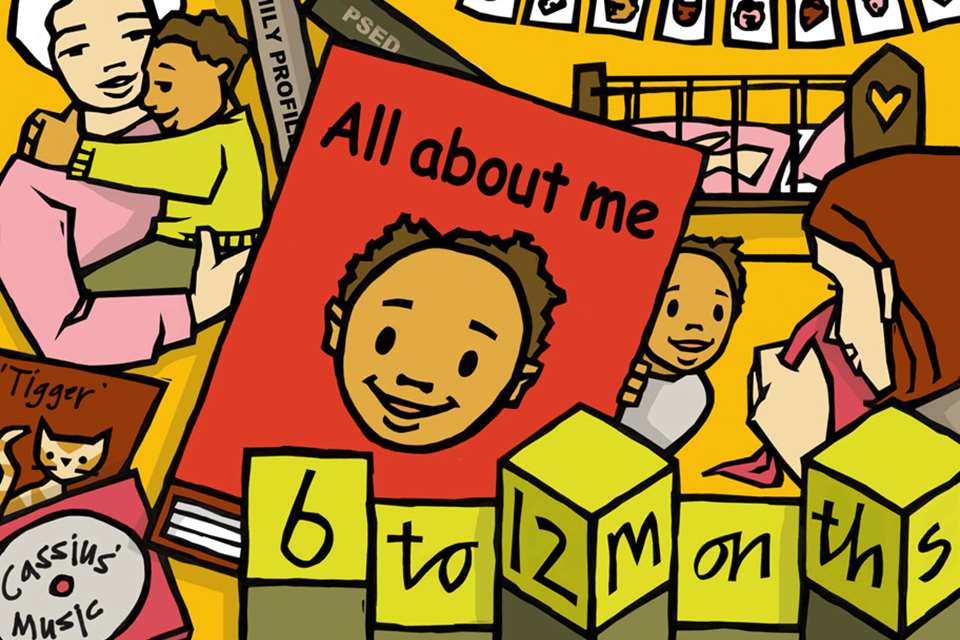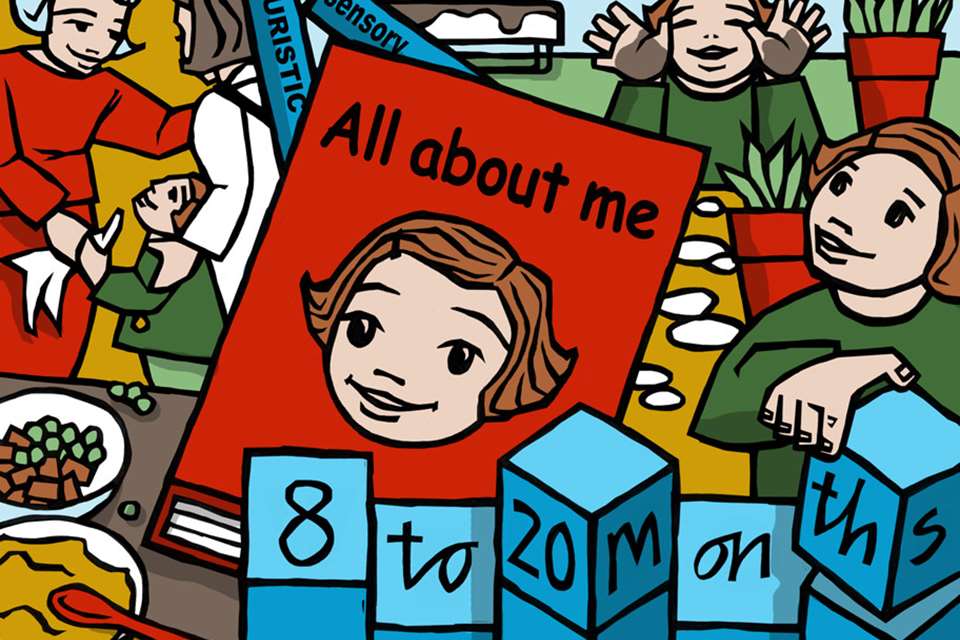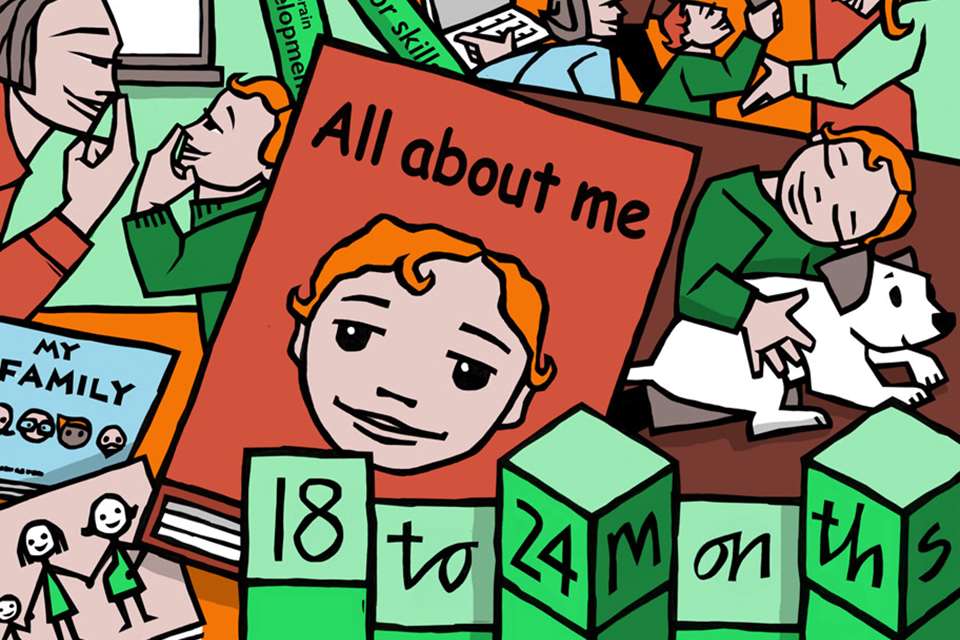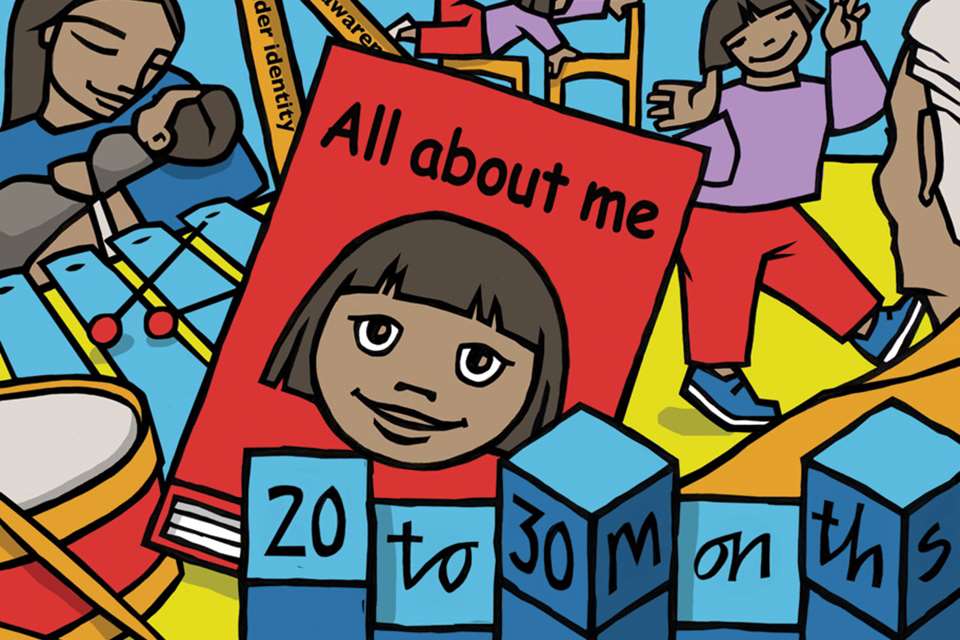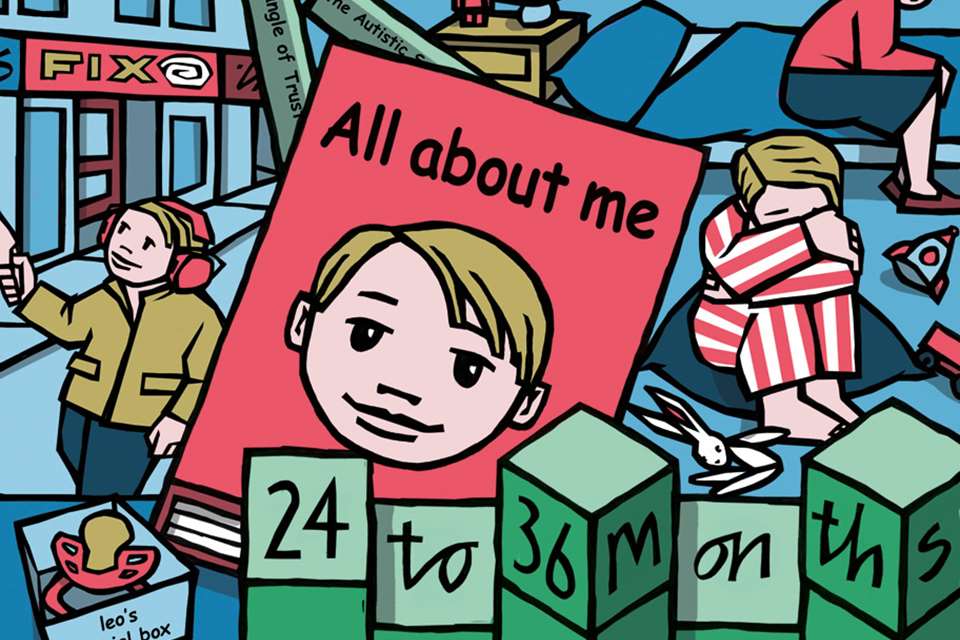STARTING POINTS: PART 7 - Poppy, 36 months old
Julia Manning-Morton
Monday, July 11, 2016
Meeting the emotional and learning needs of the unique child

By Julia Manning-Morton, an independent consultant, trainer and author (www.key-times.co.uk/profiles/). She specialises in practice and provision that meets the needs of children under three and is an expert on the personal, social and emotional well-being of children and practitioners. Her publications include Two-Year-Olds In Early Years Settings: Journeys Of Discovery (2015) and Exploring Well-being in the Early Years (2014)
Poppy has just had her third birthday, which she enjoyed celebrating at the small privately run nursery she attends in Kingston-upon-Thames, outer London. She lives nearby with her mother and father, Sophie and Carlo, in a large detached house, which they moved to recently.
Sophie and Carlo run a business together in central London, which often requires them to work evenings, so they have always had live-in au pairs to help them to look after Poppy, and Poppy has also been attending the nursery since she was six months old.
The nursery staff and children and their parents figure highly in Poppy’s socio-cultural environment because she has a very small extended family. Both Sophie and Carlo were only children and Poppy has only one grandparent, who lives in Australia so she sees her infrequently.
Poppy is of white, European heritage; her mother is of French heritage while her father's heritage is Italian, though both were born in England and speak mainly English at home. Both parents are Catholic, and attend Mass on the main religious festivals and for family events.
PERSONAL, SOCIAL AND EMOTIONAL DEVELOPMENT
Close relationships with adults
Because of the length of time Poppy has been attending the nursery, she knows the routine, environment, practitioners and other children very well. This shows in her self-confidence and sense of belonging and contribution in the setting.
So, Poppy is able to assert her needs by approaching her key person when she wants attention. She also moves freely around the group room, selecting materials and equipment, and enjoys helping – for example, to set the lunch table or lay out the sleep mats.
Recently, however, Poppy’s key person, Hayley, has noticed a change in her behaviour. Poppy has become more clinging, particularly at handover times, and is less inclined to attempt things on her own, often saying ‘can’t’ and asking for help.
At first, Hayley found this behaviour a bit irritating because she was so used to Poppy being independent. However, in a one-to-one discussion with her manager, Margie, Hayley came to realise that Poppy’s sense of security had been challenged a lot over the previous three months. Not only had she moved house, but she had also had a succession of au pairs during this time.
The family's long-term au pair, to whom Poppy was very close, had left, and the replacement had remained with the family for only a month. Consequently, Poppy was now rejecting the new au pair and being unusually defiant and non-compliant at home, particularly at bedtime because, she says, ‘The bad fairy is coming.’
The Unique Child: in practice
Hayley and Margie have now discussed how to approach these issues with Poppy’s parents, Sophie and Carlo.
Working in partnership with them had always been a challenge for the setting, as nursery staff didn’t see them very often. This was due to the au pair usually bringing Poppy to nursery and collecting her.
However, given their ethos of ‘building a bridge’ between the setting and home, the nursery team has now developed strategies for ensuring that information is shared openly between Poppy's family and the setting.
Poppy’s profile is sent home with her every weekend, and Sophie always adds comments, a photo or piece of information to it. The nursery also shares video clips with the parents and have telephone and Skype discussions if Sophie and Carlo can’t make it to a review meeting.
Hayley is also careful to include the new au pair in this information sharing, given that she is a significant person in Poppy’s life.
When the previous long-term au pair was with the family, this system had worked well, and Poppy experienced consistency and continuity of care. However, the system had broken down amidst the recent changes. Consequently, Margie and Hayley agreed a time to meet Poppy's parents to discuss how they could work together to help Poppy in what was proving a challenging time for her.
At the meeting, Sophie said she could arrange to go into work later for a while, so she could bring Poppy to nursery. They also agreed that Elena (the new au pair) would come early each afternoon and spend time with Poppy in the nursery, so that she could build up her relationship with both Poppy and Hayley.
30-42 months: key aspects of PSED
Usually, at about this age children:
- separate from their main carer with support and encouragement from a familiar adult
- seek comfort from familiar adults when they need to
- are beginning to express their feelings verbally but still often become overwhelmed by their emotions
- may try to distract themselves when they are upset, by engaging in a new play activity, for example
- are experimenting with being independent and may be strongly self-willed
- often enjoy having responsibility for carrying out small tasks
- may develop fears
Social relationships with other children
At home, Poppy is usually the only child among many adults as her extended family is very small, and the children of Sophie and Carlo’s closest friends are much older than her. One consequence of this is that she has tended to play with the practitioners at nursery more than the other children.
The nursery operates a ‘looping’ system whereby the key persons move with their key children through the nursery as they grow older, so Hayley is very familiar with this aspect of Poppy’s development and has done much to facilitate her social relationships with the other children.
She spends a lot of time being close by, supporting Poppy’s communications and negotiations with other children, not because Poppy can’t communicate verbally but because she often tries to direct the other children against their will and finds it hard to incorporate their interests or needs in a play scenario. This kind of engagement can result in quarrels and tussles, especially in Poppy’s favourite play area, the home area.
Poppy has negotiated the very different social environments of home and nursery by developing some different responses in each. For example, at home, because Sophie is often in a hurry, Poppy is used to having things like dressing and washing done for her. This is also partly due to Sophie and Carlo’s cultural expectations; in their families, children are not expected to be independent so early.
However, in the nursery, where Poppy is one of a large group of children, she has had to develop her self-help skills and is confident in, for example, using the toilet, washing her hands and putting on her coat. When Hayley sent home a video of Poppy serving herself and pouring her own drink at lunchtime, Sophie was amazed!
30-42 months: key aspects of social development
Usually, at about this age children:
- are interested in having friends and are becoming more skilled in making friends
- gradually learn to negotiate and to give and take, sharing resources more and accepting the needs of others
- experiment with feeling powerful and having a sense of control; sometimes through quarrels with other children
- begin to be able to think about things from somebody else’s point of view
Theory: social play
Children’s play is often thought about in terms of stages, beginning with solitary play, where babies play alone with objects, their voices, or hands and feet.
This is then thought to develop into parallel play, where the toddler plays alongside others, watching and imitating them but not yet interacting with them. By the end of the third year of life, there may be more interaction between children but each has their own agenda; this is called associative play. Then co-operative play develops and children begin to share and engage in shared projects as they grow older.
This theory of social play still has a lot of influence on adults’ expectations of young children, but if you observe babies and children’s play, you will see examples of each of these different approaches at all ages.
If you think about your own recreational or creative pastimes, you will see that sometimes you might prefer to do something alone and sometimes alongside or in co-operation with others, depending on what you are doing or how you feel. So, although it is useful to consider these approaches to play, it is better not to tie them to a particular age group, or to see them as a developmental hierarchy.
Older children often play in very deep ways when they are alone, and babies enjoy playing with their close adults or practitioners from birth. Children often feel like just watching, especially if they are new to a setting, the play activity is new, or they may want companionship but not much interaction.
Co-operative play is very reliant on children having similar interests and agendas and being able to share their ideas. This often needs a lot of support from practitioners, who can clarify each child’s intentions, suggest compromises when ideas conflict and words to help children explain to each other.
As children’s ability to imagine and pretend develops, so does their ability to understand what other people feel and think, what upsets them and how to engage them in social interaction.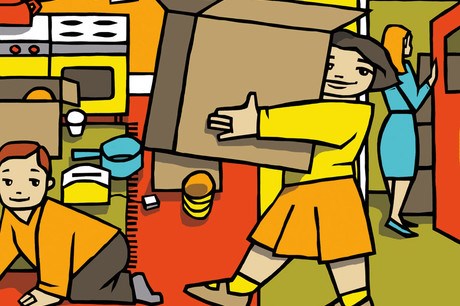
COMMUNICATION AND LANGUAGE
Another consequence of Poppy’s socio-cultural experience of socialising mainly with adults is that she has well-developed language skills. This is helpful to her in as much as she can express herself clearly. However, her articulacy sometimes misleads adults into thinking that she is more emotionally and socially mature than she is.
It can also sometimes alienate her from her peers as she often uses an adult way of phrasing her talk. Mabel, for example, once told Hayley, ‘I’m not playing with Poppy; she just says, “Come here, come here, come here” but she’s not my mummy.’
30-42 months: key aspects of communication and language development
Usually, at about this age children:
- use language as a means of widening their contacts and sharing feelings, experiences and thoughts
- may begin to use plurals, pronouns, adjectives, possessives, time words, tenses and sentences
- make what are called virtuous errors in the way that they use grammar, such as ‘I goed there’ instead of ‘I went there’
- love to chat and ask questions (what, where and who)
- sometimes stutter because their thinking goes faster than their verbal expression
COGNITIVE DEVELOPMENT
Thinking, imagining and creating
Poppy’s understanding and use of language can be seen to support her imaginative and creative play. As her use of words as symbols has expanded, so has her understanding that one thing can be used to stand for something else and her imaginative, pretend play has developed.
Hayley has frequently observed Poppy in the home area, talking to herself, immersed in a play scenario of her own in which she re-creates and re-presents her familiar experiences. Most recently, this has involved repeatedly ‘packing up the house’ by putting all the resources into the cupboard.
Hayley observed Poppy getting frustrated with the limited space for ‘packing’, so together they wondered what they could do about this problem. Poppy (sounding just like Sophie) said, ‘It’s no good we just need more boxes!’, so they looked for boxes in the kitchen and Poppy chose ‘only big ones ‘cos that’s good for packing’.
Hayley then created another small home area nearby so that Poppy could also ‘unpack’. She also introduced a storybook about moving house at key group time, when Poppy was able to talk knowledgeably about house removals, as well as process some of the emotional experience too, telling her friends that ‘Daddies get cross when the men are late’. Her ability to retell a past experience like this, her problem solving and understanding of size are all examples of how her thinking is developing.
As well as representing her experiences in imaginative play, Poppy also explores them through an enclosure schema. On one occasion, she used the large hollow blocks in the garden to create a square into which she moved a chair, and then sat there holding a doll and just watching for a while. When Mabel tried to join her she said, ‘You can’t come in here, my house not ready.’
30-42 months: key aspects of cognitive and creative/representational development
Usually, at about this age children:
- further develop their symbolic behaviour: They use language, they pretend (often talking to themselves while playing) and they represent events in drawings, models, and movement
- base their imaginative play on their first-hand experiences
- may become easily afraid, as they can become confused about what is real and whatis imaginary
- use available resources to create props to support their play
- may enjoy music; playing instruments, singing and dancing
- can usually think back and forward much more easily than before
- engage in problem solving
- identify common colours
- understand ideas such as ‘more’ and ‘fewer’, and ‘big’ and ‘small’
- use positional language
PHYSICAL DEVELOPMENT
Playing and moving
All Poppy’s play activities are supporting and refining her physical skills; her dexterity, sense of balance and spatial awareness. However, Hayley has noticed that Poppy has become more reluctant to get involved in boisterous physical play and doesn’t often choose to climb.
This behaviour seems to be because she has become worried about dirtying her clothes, and because the dresses and shoes that she is wearing sometimes inhibit her free movement.
When Hayley talked to Sophie about this, it became clear that it was a misunderstanding by the au pair who had thought that Poppy should be wearing more typical ‘girls’ clothes and look smart for nursery.
30-42 months: key aspects of physical development
Social contexts as well as biological processes affect a child’s physical development. Usually, at about this age children:
- are very mobile and are able to run safely, kick a ball and climb
- display a sense of balance through jumping and landing on two feet, walking backwards and sideways, standing and walking on tiptoe, standing on one foot and walking along a line
- draw circles, lines and dots, using a preferred hand
- are able to pick up tinyobjects using a fine pincer grasp
- can catch and throw
FURTHER READING
Bruce, T (2011) Learning through Play: For Babies, Toddlers and Young Children. London: Hodder Education
Lindon, J (2010) (2nd edition) Understanding Child Development: Linking Theory and Practice. London: Hodder Education
Meggitt, C Bruce, T and Manning-Morton, J (2016) (6th Edition) Childcare and Education. London: Hodder Education.
Gussin Paley, Vivian (2004) A Child's Work: the importance of imaginative play. University of Chicago Press
Sheridan, Mary (2010) Play in Early Childhood: From Birth to Six Years (revised and updated by Justine Howard and Dawn Alderson. London: Routledge
For related guides and more information, visit: www.nurseryworld.co.uk/child-development, www.nurseryworld.co.uk/psed, www.nurseryworld.co.uk/communication-language and www.nurseryworld.co.uk/schemas


